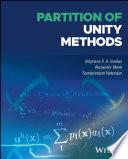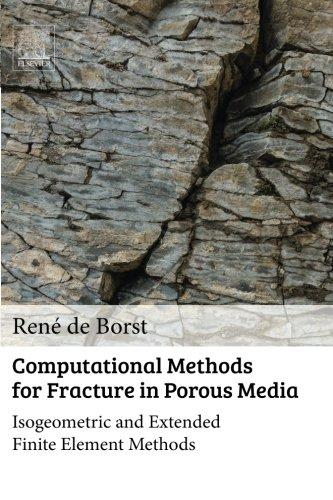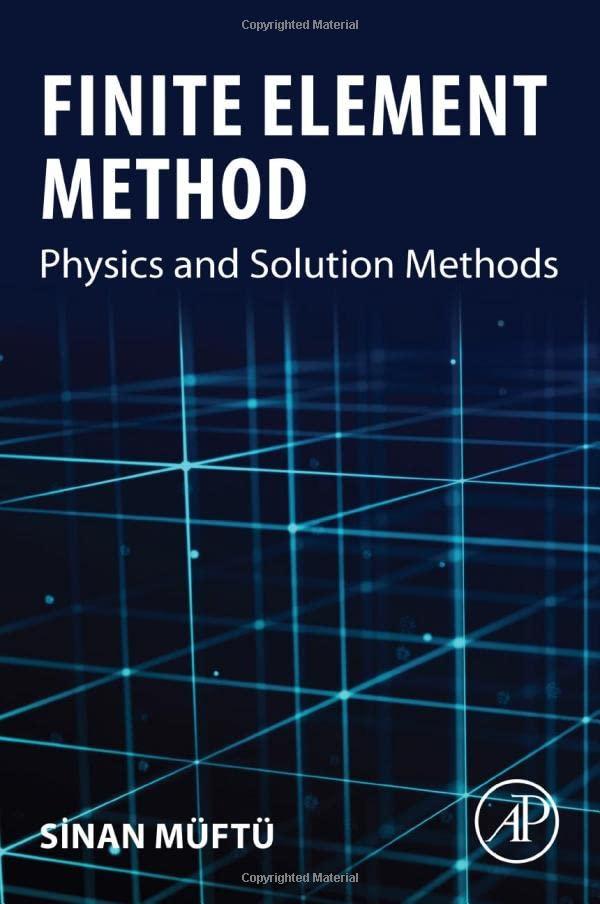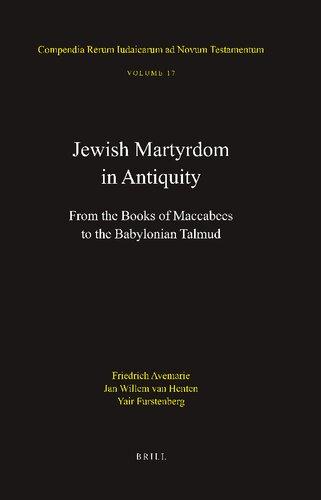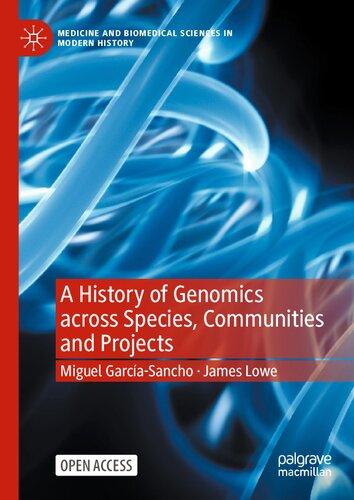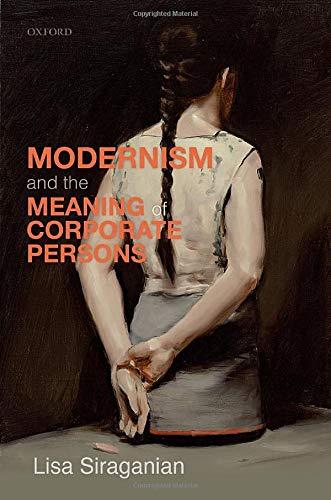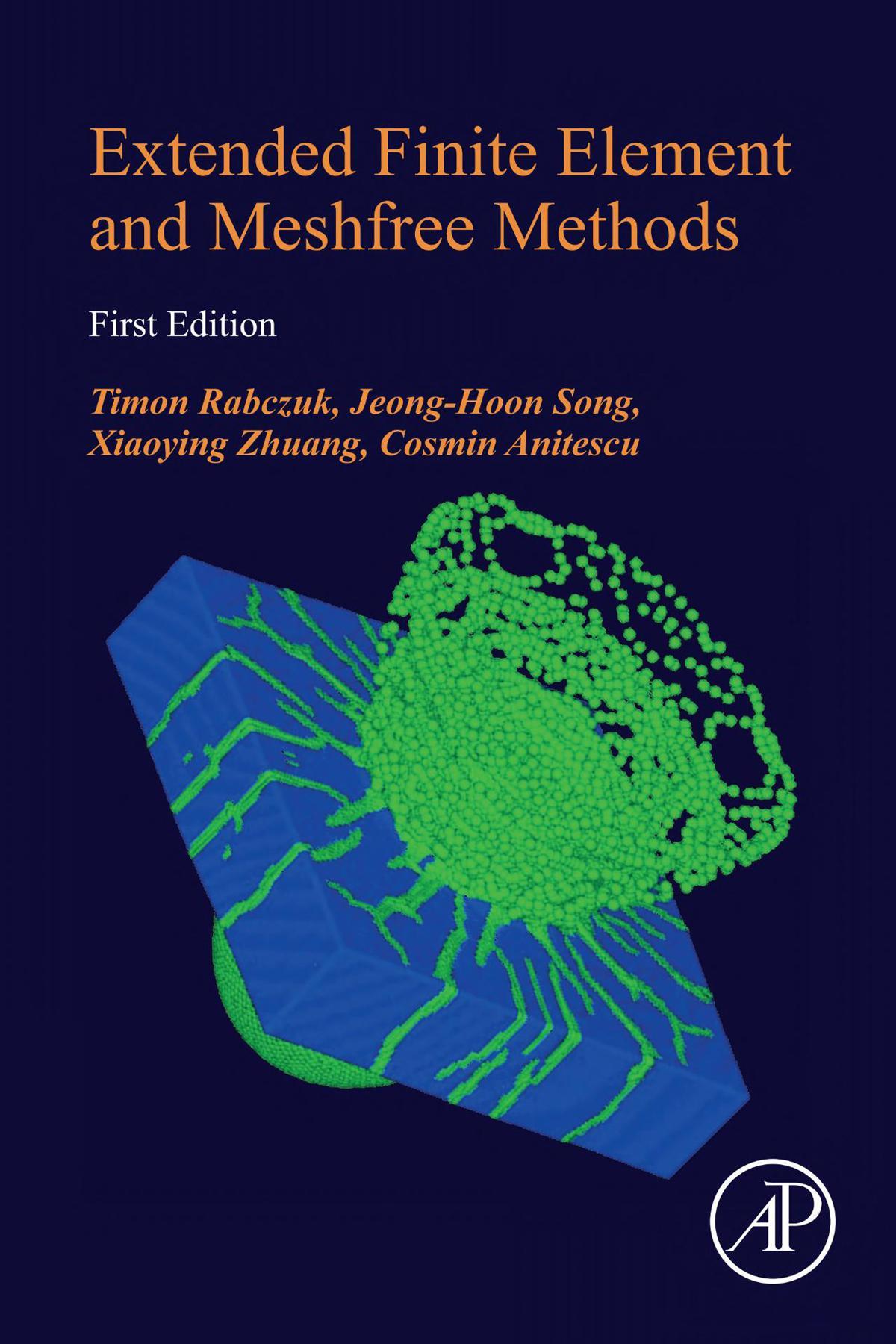EXTENDEDFINITE ELEMENTAND MESHFREEMETHODS
TIMONRABCZUK
BauhausUniversitätWeimar
Weimar,Germany
JEONG-HOONSONG
UniversityofColoradoatBoulder
Boulder,CO,UnitedStatesofAmerica
XIAOYINGZHUANG
TongjiUniversity
Shanghai,China
LeibnizUniversitätHannover
Hannover,Germany
COSMINANITESCU
BauhausUniversitätWeimar
Weimar,Germany
AcademicPressisanimprintofElsevier 125LondonWall,LondonEC2Y5AS,UnitedKingdom 525BStreet,Suite1650,SanDiego,CA92101,UnitedStates 50HampshireStreet,5thFloor,Cambridge,MA02139,UnitedStates TheBoulevard,LangfordLane,Kidlington,OxfordOX51GB,UnitedKingdom Copyright©2020ElsevierInc.Allrightsreserved.
MATLAB® isatrademarkofTheMathWorks,Inc.andisusedwithpermission. TheMathWorksdoesnotwarranttheaccuracyofthetextorexercisesinthisbook. Thisbook’suseordiscussionofMATLAB® softwareorrelatedproductsdoesnotconstitute endorsementorsponsorshipbyTheMathWorksofaparticularpedagogicalapproachorparticular useoftheMATLAB® software.
Nopartofthispublicationmaybereproducedortransmittedinanyformorbyanymeans, electronicormechanical,includingphotocopying,recording,oranyinformationstorageand retrievalsystem,withoutpermissioninwritingfromthepublisher.Detailsonhowtoseek permission,furtherinformationaboutthePublisher’spermissionspoliciesandourarrangements withorganizationssuchastheCopyrightClearanceCenterandtheCopyrightLicensingAgency, canbefoundatourwebsite: www.elsevier.com/permissions.
Thisbookandtheindividualcontributionscontainedinitareprotectedundercopyrightbythe Publisher(otherthanasmaybenotedherein).
Notices
Knowledgeandbestpracticeinthisfieldareconstantlychanging.Asnewresearchandexperience broadenourunderstanding,changesinresearchmethods,professionalpractices,ormedical treatmentmaybecomenecessary.
Practitionersandresearchersmustalwaysrelyontheirownexperienceandknowledgein evaluatingandusinganyinformation,methods,compounds,orexperimentsdescribedherein.In usingsuchinformationormethodstheyshouldbemindfuloftheirownsafetyandthesafetyof others,includingpartiesforwhomtheyhaveaprofessionalresponsibility.
Tothefullestextentofthelaw,neitherthePublishernortheauthors,contributors,oreditors, assumeanyliabilityforanyinjuryand/ordamagetopersonsorpropertyasamatterofproducts liability,negligenceorotherwise,orfromanyuseoroperationofanymethods,products, instructions,orideascontainedinthematerialherein.
LibraryofCongressCataloging-in-PublicationData
AcatalogrecordforthisbookisavailablefromtheLibraryofCongress
BritishLibraryCataloguing-in-PublicationData
AcataloguerecordforthisbookisavailablefromtheBritishLibrary
ISBN:978-0-12-814106-9
ForinformationonallAcademicPresspublications visitourwebsiteat https://www.elsevier.com/books-and-journals
Publisher: MatthewDeans
AcquisitionEditor: BrianGuerin
EditorialProjectManager: IsabellaC.Silva
ProductionProjectManager: SuryaNarayanan Jayachandran
Designer: MarkRogers
TypesetbyVTeX
Preface xiii Nomenclaturexix
1.Introduction1
1.1. Partitionofunitymethods1
1.2. Movingboundaryproblems6
1.3. Fracturemechanics8
1.4. Levelsetmethods10
1.4.1. Implicitinterfaceandsigneddistancefunctions11
1.4.2. Discretizationofthelevelset12
1.4.3. Capturingmotioninterface12
1.4.4. Levelsetsfor3Dfracturemodeling14 References15
2.Weakformsandgoverningequations19
2.1. Strongformforpuremechanicalproblems19
2.1.1. Onedimensionalmodelproblem19
2.1.2. Modelprobleminhigherdimensions20
2.1.3. TotalLagrangianformulation21
2.1.4. UpdatedLagrangianformulation22
2.2. Fromthestrongformtotheweakform24
2.2.1. Weakformfortheone-dimensionalmodelproblem24
2.2.2. WeakformforthetotalLagrangianformulation26
2.3. Variationalformulation27
3.Extendedfiniteelementmethod29
3.1. Formulationandconcepts29
3.1.1. StandardXFEM29
3.1.2. Hansbo-HansboXFEM34
3.2. Blending,integrationandsolvers36
3.2.1. Blending36
3.2.2. Isoparametric2DquadrilateralXFEMelementforlinearelasticity40
3.2.3. Shapefunctions41
3.2.4. TheB-operator42
3.2.5. Theelementstiffnessmatrix44
3.2.6. Integration46
3.3. XFEMforstatic/quasi-staticfracturemodelingin2Dand3D50
3.3.1. XFEMapproximationforcracks50
3.3.2. Discreteequations54
3.3.3. Crackbranchingandcrackjunction57
3.3.4. Crackopeningandcrackclosure59
3.4. XFEMfordynamicfracturemodelingin2Dand3D60
3.4.1. Diagonalizedmassmatrix60
3.4.2. Limitations64
3.5. Smoothedextendedfiniteelementmethod65
3.5.1. IntroductiontoSFEM67
3.5.2. EnrichmentinSXFEMandselectionofenrichednodes70
3.5.3. Displacement-,strainfieldapproximationanddiscreteequations72
3.5.4. Numericalintegration75
3.6. XFEMforcoupledproblems77
3.6.1. Hydro-mechanicalproblems77
3.6.2. Thermo-mechanicalproblems89
3.6.3. Piezoelectricmaterials92
3.6.4. Flexoelectricity100
3.7. XFEMforinverseanalysisandtopologyoptimization105
3.7.1. Inverseproblem105
3.7.2. Optimizationproblems115
3.7.3. Mathematicalformofastructuraloptimizationproblem116
3.7.4. Solidisotropicmaterialwithpenalization(SIMP)117
3.7.5. Levelsetbasedoptimization118
3.7.6. Nanoelasticity118
3.7.7. Nanopiezoelectricity130
3.8. Conditioningandsolutionofill-conditionedsystems146 References147
4.Phantomnodemethod153
4.1. Formulationandconcepts153
4.2. Acracktipelementforthephantomnodemethods154
4.2.1. Three-nodetriangularelement154
4.2.2. Four-nodequadrilateralelement157
4.3. Multiplecrackmodeling158 References159
5.Extendedmeshfreemethods161
5.1. Introductiontomeshfreemethods161
5.1.1. Basicapproximation161
5.1.2. Completenessandconservation162
5.1.3. Consistency,stabilityandconvergence164
5.1.4. Continuity165
5.1.5. Partitionofunity165
5.1.6. Kernelfunctions167
5.2. Somespecificmethods171
5.2.1. Approximationofthedisplacementfield171
5.2.2. Spatialintegration177
5.2.3. Essentialboundaryconditions185
5.2.4. Comparisonofdifferentmethods186
5.3. Numericalinstabilities190
5.3.1. Instabilityduetorankdeficiency192
5.3.2. Tensileinstability193
5.3.3. Attemptstoremoveinstabilities193
5.3.4. Materialinstabilityinmeshfreemethods194
5.4. Fracturemodelinginmeshfreemethods209
5.4.1. Thevisibilitymethod209
5.4.2. Thediffractionmethod212
5.4.3. Thetransparencymethod215
5.4.4. The“seethrough”and“continuousline”method217
5.5. Theconceptofenrichment217
5.5.1. Intrinsicenrichment219
5.5.2. Extrinsicenrichment222
5.6. (Extrinsically)enrichedlocalPUmeshfreemethods225
5.6.1. Enrichedmethodswithcracktipenrichment226
5.6.2. Enrichedmethodswithoutcracktipenrichment230
5.6.3. Crackbranchingandcrackjunction236
5.7. Extendedlocalmaximumentropy(XLME)238
5.7.1. LocalMaximumEntropy(LME)approximants239
5.7.2. Numericalintegration243
5.7.3. Conditionnumber245
5.8. Crackingparticlemethods245
5.8.1. Theenrichedcrackingparticlesmethod246
5.8.2. Applicationstolargedeformations250
5.8.3. Thecrackingparticlesmethodwithoutenrichment250
5.8.4. Crackingrulesforcrackingparticlemethods251
5.9. Comparisonofdifferentmethods253
5.9.1. ThemodeIcrackproblem253
5.9.2. Themixedmodeproblem260
5.10. ExtensionstomodeIIkinematics263
5.10.1. Enrichingintheshearbandplane263
5.10.2. EnforcingmodeII-kinematicswiththepenaltymethod265
5.11. Discretesystemofequationsforpuremechanicalproblems265
5.11.1. Methodswithoutenrichment265
5.11.2. Enrichedmethods267
5.11.3. Extensiontodynamics270
5.12. Spatialintegration283
5.13. Timeintegration286
5.13.1. Explicit-implicittimeintegration286
5.13.2. Explicittimeintegration,criticaltimestepandmasslumping287
5.13.3. Crackpropagationintime304 References306
6.Extendedisogeometricanalysis315
6.1. Formulationandconcepts315
6.1.1. B-splinesandNURBS315
6.1.2. Bézierextraction317
6.2. HierarchicalrefinementwithPHT-splines320
6.2.1. PHT-splinespace321
6.2.2. Computingthecontrolpoints323
6.3. Analysisusingsplines324
6.3.1. Galerkinmethod325
6.3.2. Linearelasticity327
6.4. Numericalexamples329
6.4.1. Infiniteplatewithcircularhole329
6.4.2. Openspanner330
6.4.3. Pinchedcylinder331
6.4.4. Hollowsphere332
6.5. Adaptiveanalysis333
6.5.1. Determiningthesuperconvergentpointlocations333
6.5.2. Superconvergentpatchrecovery337
6.5.3. Markingalgorithm340
6.6. Multi-patchformulationsforcomplexgeometry341
6.7. XIGAforinterfaceproblems341
6.7.1. Governingandweakformequations342
6.7.2. Enrichedbasisfunctionsselection345
6.7.3. Enrichmentfunctions347
6.7.4. GrevilleAbscissae348
6.7.5. Repeatingmiddleneighborknots349
6.7.6. Inversemapping350
6.7.7. Curvefitting351
6.7.8. Intersectionpoints353
6.7.9. Triangularintegration354 References355
7.Fractureinplatesandshells359
7.1. FracturesinshellandplatesusingXFEM359
7.1.1. Weakform359
7.1.2. ImplementationbasedontheQ4element361
7.1.3. Shearlocking362
7.1.4. Curvaturestrainsmoothing363
7.1.5. Extendedfiniteelementmethodforsheardeformableplates365
7.1.6. Smoothedextendedfiniteelementmethod367
7.1.7. Integration368
7.2. Fracturesinshellandplatesusingthephantomnodemethod370
7.2.1. PhantomnodemethodfortheBelytschko-Tsayshellelement370
7.2.2. Phantomnodemethodbasedonthethree-nodeisotropic triangularMITCshellelement378
7.3. Extendedmeshfreemethodsforfractureinshells392
7.3.1. Shellmodel393
7.3.2. Continuumconstitutivemodels396
7.3.3. Crackmodel397
7.4. Animmersedparticlemethodforfluid-structureinteraction402
7.5. XIGAmodelsforplatesandshells408
7.5.1. Kinematicsoftheshell408
7.5.2. Weakform410
7.5.3. Discretizationofthedisplacementfieldandenrichment412
7.5.4. Discretesystemofequations419
7.5.5. Edgecrackedplatesundertensionorshear422
7.5.6. Pressurizedcylinderwithanaxialcrack428
References432
8.Fracturecriteriaandcracktrackingprocedures437
8.1. Fracturecriteria437
8.2. Crackingcriteria437
8.2.1. CriteriainLEFM437
8.2.2. Globalenergycriteria440
8.2.3. Rankinecriterion440
8.2.4. Lossofmaterialstabilitycondition441
8.2.5. Rank-one-stabilitycriterion443
8.2.6. Determiningthecrackorientation444
8.2.7. Computationofthecracklength444
8.3. Cracksurfacerepresentationandtrackingthecrackpath445
8.3.1. Thelevelsetmethodtotracethecrackpath447
8.3.2. Trackingthecrackpathin3D451
8.3.3. Adaptivecrackpropagationtechnique462
8.3.4. Comments464 References466
9.Multiscalemethodsforfracture471
9.1. ExtendedBridgingDomainMethod472
9.1.1. Concurrentcouplingoftwomodelsatdifferentlengthscales474
9.1.2. Consistencyofmaterialproperties479
9.2. Extendedbridgingscalemethod479
9.2.1. Consistencyofmaterialproperties481
9.2.2. Upscalinganddownscaling483
9.3. Multiscaleaggregatingdiscontinuity(MAD)method491
9.3.1. Overviewofthemethod491
9.3.2. Coarsegrainingmethod494
9.3.3. Micro-macrolinkage500
9.4. Crackopeninginunitcellswiththehourglassmode503
9.5. Stabilityofthemacromaterial504
9.6. Implementation507
9.7. Numericalexamples508
9.7.1. 3Dmodelingofcracksinananocomposite508
9.7.2. Hierarchicalmultiscaleexample508
9.7.3. Semi-concurrentFE-FEcouplingexample510
9.7.4. ConcurrentFE-XFEMcouplingexample512
9.7.5. MD-XFEMcouplingexample513 References516
10.Ashortoverviewofalternativesforfracture521
10.1. Numericalmanifoldmethod(finitecovermethod)521
10.1.1. Thecoverapproximation522
10.1.2. Theleastsquare-basedphysicalcoverfunctions523
10.1.3. Theimpositionofboundaryconditions524
10.1.4. Fracturemodeling524
10.1.5. Geometricandmaterialnonlinearanalysis527
10.2. Peridynamicsanddual-horizonperidynamics528
10.2.1. Dual-horizonperidynamics531
10.2.2. Thedualpropertyofdual-horizon539
10.2.3. Wavepropagationin1Dhomogeneousbar543
10.2.4. Numericalexamples544
10.3. Phasefieldmodels562
10.3.1. Concepts563
10.3.2. Governingequations568
10.3.3. Discretization569
10.3.4. Solutionschemes572
10.3.5. Implementations573 References575
11.Implementationdetails581
11.1. Computerimplementationofenrichedmethods581
11.1.1. Pre-processing582
11.1.2. Processing585
11.1.3. Post-processing589
11.2. Numericalexamples590
11.2.1. Crackpropagationangle591
11.2.2. Hydro-mechanicalmodelwithcentercracks591
11.2.3. Hydro-mechanicalmodelwithedgecrack592 References597
Part1.Appendices
A.Derivationofshapederivativeforthenanoelasticityproblem601
B.Derivationoftheadjointproblemforthenanopiezoelectricity problem603 Index
Preface
Theobjectiveofthisbookistoprovideanoverviewandthetheoretical/computationalbackgroundofpartition-of-unitybasedcomputational methods,theirimplementationandapplications.Thefocusisonextended finiteelementandmeshfreemethodsandtheirapplicationwithfocuson modelingmaterialfailure.Itisassumedthatthereadersarealreadyfamiliar withfiniteelementmethodsorsimilarcomputationalapproachesincluding theirimplementation.Thecontentofthisbookiswrittenfromanengineeringpointofview.Itexplainsconceptsandformulationsandprovides detailsontheimplementationthroughsimpleMatlab® codes.Weprovideclassicalbenchmarkproblemsforwhichstate-of-the-artcomputational methodsaretestedatandpresentsomeinterestingnumericalexamplesto demonstratethepowerandperformanceoftheoutlinedmethods.The bookhoweverdoesnotcontainmathematicalproofsconcerningforinstancetheconvergenceoftheabovemethods.Convergenceplotsarejust shownnumericallyforspecificexamples.Thoughsomeofthemethodsare implementedincommercialsoftwaresuchasABAQUS,thebookdoesnot provideadescriptionontheuseofthesefunctionswithinsuchcommercial codes.
Thebookisaimedforstudentsandresearcherswhoareinterestedin learningandimplementingpartition-of-unitymethod,especiallyextended finiteelementandmeshfreemethods.Itiswellsuitedforstudentsandpostdoctoralfellowstostartresearchinthisdirectionandwhoareinterestedin methoddevelopmentortheapplicationofdescribedmethodstochallengingproblemsinengineeringandmaterialsscience.Itisalsoofinterestto readerswhoareinterestedinstate-of-the-artcomputationalmethodsfor linearandnonlinearfractureandchoosinganadequatemethodfortheir problemofinterest.Thecontentofthisbookistooextensivetobecoveredinasinglecoursethoughpartsofitcouldbethebasisfora1-semester courseonmeshfreemethodsorextendedfiniteelements.
Chapter 1 providesanintroductiontocomputationalchallengeswhich occurinproblemswithmovingboundariessuchasfracture,fluidmechanics,fluid-structureinteraction,inverseproblemsoroptimization.Italso presentsthelevelsetmethodwhichiscommonlycombinedwithpartitionof-unitymethodsforthoseproblems.Chapter 2 summarizesthegoverning equationsforpurelymechanicalproblemsforapplicationsinstaticsand
dynamicsasmostofthemethodsarepresentedinsuchasetting.They areprovidedinstrongandweakformincludingaTotalLagrangianand updatedLagrangiandescriptionofmotion.Chapter 3 isfocusedontheextendedfiniteelementmethod(XFEM)andvariationsorimprovementsof it.Withinthischapter,challengesrelatedtoso-calledblending,numerical integration,enrichmentandsolutionproceduresarediscussedandpotential solutionsarederived.TheimplementationofXFEMforstaticanddynamic fractureproblemsisdescribedindetailandtherepresentationofcomplex featuressuchascracknucleation,crackbranchingandcrackcoalescenceis discussed.WealsoproposeavariationoftheclassicalXFEMforfracture,i.e. thesmoothedextendedfiniteelementmethod(SXFEM).SXFEMavoids theintegrationofthesingularityincaseofasymptoticcracktipenrichments.Itfacilitatesthesubtriangulationcommonlyemployedincracked elements,andinheritscertainsuperiorpropertiesofthesmoothedfinite elementmethodincludinglesssensitivitytomeshdistortionanditshigh accuracyfortriangularelements.Wesubsequentlypresenttheextendedfiniteelementformulationsforcoupledfractureproblemsincludingdifferent enrichmentstrategies,implementationdetailsandpotentialchallengesrelatedforinstancetotheill-conditioningofthefinalsystemofequationsto besolved.Thermo-mechanical,hydro-mechanicalandelectro-mechanical aredescribed;thelatteronesincludepiezo-aswellasflexoelectricmaterials.Finally,twootherimportantapplicationsofXFEMaregiven:Inverse analysisand(topology)optimization.Forthoseproblems,XFEMallowsan exact–implicit–representationofthetopologythroughlevelsetfunctions andhenceemployingalwaysthesamemeshduringtheiterationswhile maintainingoptimalconvergencerates.Theperformanceofthemethod isdemonstratedforseveralchallengingproblemsintheassociatedsection forselectedproblem.Thephantomnodemethod,another“variation”of XFEM,inChapter 4 isnotbasedonenrichmentfunctionsbutoverlappingelements.Ithastheadvantageofbeingeasilyimplementableintoan existingfiniteelementcodebutcanbeappliedonlytofractureproblems. Conceptsforhowtoincorporatemultiplecracksandspecificcracktipelementsaredevisedinthischapter.
ThetopicofChapter 5 isextendedmeshfreemethods.Firstly,thebasic conceptofmeshfreemethodsisexplained.Subsequently,wepresentseveral popularmeshfreeapproximationsincludingtheSmoothedParticleHydrodynamics(SPH)andimprovementsofitsuchastheReproducingKernel ParticleMethod(RKPM).Themostlyrationalshapefunctionsandlack oftheso-calledKronecker-deltapropertyimposeadditionalchallengeson
meshfreemethodscomparedtoFEM.Inthiscontext,weprovidedifferent approachesofspatialnumericalintegration,impositionofessentialboundaryconditionsaswellassolutionstoavoidinstabilitiesofdifferentsources whichoccurinmanymeshfreemethodssuchasSPH.Wesubsequently presentclassicalmethodsonhowtoincorporatestrongdiscontinuities andfinallymodeldiscretefracturewithinmeshfreemethodsincludingthe visibility,diffractionandtransparencymethod.Differentextendedmeshfreemethodsarepresentedwhicharebasedeitheronanintrinsicoran extrinsicenrichment.Inanintrinsicenrichment,theenrichmentfunctionsareincludedinthepolynomialbasisusedtoconstructthemeshfree shapefunctionswhileextrinsicenrichmentschemesaremainlyfocusedon partition-of-unityenrichments.Twoclassesofdiscretefracturemethods arepresented.Thefirstclassensuresacontinuouscrackpathandrequires specialapproachestorepresentthecrack’stopologyandcracktracking algorithmswhilethesecondclass,theso-calledcrackingparticlemethods,representthecrackassetofcracksegmentsandavoidcracktracking algorithmsandmethodstorepresentthecracksurfaceentirely.Theperformanceofvariousextendedmeshfreemethodsarecomparedforseveral classicalbenchmarkproblemsmostlyinlinearelasticfracturemechanics.
Chapter 6 presentsformulationsbasedonextendedIsogeometricAnalysis(XIGA).WefirstdescribepopularIGAbasisfunctionsincluding B-splines,NonUniformRationalB-splines(NURBS)andPHT-splines, whichareusefulforh-adaptiverefinementprocedureswithinIGA.ImplementationdetailsofIGAforproblemsinlinearelastostaticsareprovided beforedifferentXIGAapproachesforweakdiscontinuitiesarediscussed indetail.Wededicatedanentirechaptertoextendedfiniteelementand meshfreemethodsformodelingfractureinplatesandshells.Formulations basedonMindlin-ReissneraswellasKirchhoffLoveshellsaredevised.In thelattercase,thehigher-ordercontinuityoftheassociatedmeshfreeor IGAmethodhasbeenexploited,sothatnoadditionalrotationaldegrees offreedomareneeded,whichdrasticallyfacilitatestheenrichmentstrategy requiringfulfillmentofaconstraintcondition.Wealsopresentamethod thatcanefficientlydealwithfluid-drivenfractureduetofluid-structure interaction.
Eachoftheabovementionedmethodsarecapableofdealingwith discretefractureefficiently.However,theyallrequireafracturecriterion whichdeterminetheorientationand“length”ofthecrack.Therefore, Chapter 8 isrelatedtostate-of-the-artfracturecriteriaandcracktrackingalgorithmsformethodsrequiringacontinuouscracksurface.Fracture
criteriaforproblemsinlinearelasticfracturemechanics(LEFM)aswell asnonlinearcontinuaaredescribed.Whilethefracturecriterionprovides theorientationofthecracksurface,criteriaforpropagatingthecrackare neededaswell.Differentapproachesforhowtorepresentthecracksurface basedontriangularfacetsandlevelsetsareexplainedandrelatedtodifferentcomputationalmethods.Inthiscontext,wedescribeindetailefficient cracktrackingalgorithmsinthreedimensionsanddiscusschallengesand limitations.
Chapter 9 presentsdifferentmultiscalemethodsforfracturewhichare usefulforapplicationssuchascomputationalmaterialsdesign.Thefocus willbeonso-calledconcurrentmultiscalemethodsforfracturewherethe geometryofafine-scalemodelisdirectlyintegratedintothegeometryof thecoarse-scalemodel.Allthosemethodsarebasedonextendedfiniteelementmethodstorepresentfractureeitherononeortwolengthscales.Two approachesaredescribed:Inthefirstapproach,thefine-scaledomainand thecoarse-scaledomainiscoupledatadiscreteinterface.Thisapproach seemspromisingforstaticapplicationswhilethesecondapproachisbetter fordynamicfractureasartificialwavereflectionsareminimizedthrough ahandshakecouplingwhichcontainsboththefine-scaleandcoarse-scale domain.Efficientstrategiestocoarsegraincracksarepresentedwhichare requiredinadaptivemultiscalemethodstoguaranteecomputationalefficiency.Themultiscalemethodsforfracturearedescribedforcouplingtwo continuummodelsaswellascouplingatomisticandcontinuummodels.
Chapter 10 brieflygivesashortintroductiontocompetitiveandpopularalternativemethodsforfracture,i.e.thenumericalmanifoldmethod (NMM),peridynamics(PD)aswellasphasefieldmodelsforfracture. TheNMMsharessomefeaturesofthephantomnodemethodthough ithasbeenproposedmuchearlier,evenbeforetheextendedfiniteelement method.PDisaveryefficientmethodfordynamicfractureas–similarly tothecrackingparticlesmethod–itdoesnotrequirecracktrackingprocedures.ThecrackpathinPDisanaturaloutcomeofthesimulation.Phase fieldmodelsaresomehowrelatedtogradientdamagemodelsandsmear thecrackoveracertainwidth.Thebeautyofthephasefieldmodelliesin thethermodynamicconsistentframework,whichallowsastraightforward implementationintoafiniteelementframework.Thoughtheybelongto theclassofcontinuousapproachesforfracture,weincludedtheminour bookduetotheirgrowingpopularity.
Thelastchapterofthebookisdedicatedtotheimplementationdetails ofthepresentedapproachesinthisbook,i.e.XFEM,extendedmeshfree
methodsandXIGA.ThefocusisonthedevelopmentofCAD-compatible formulationsintheframeworkof(X)IGAisbrieflyexplained.Somenumericalexamplesareincludedandalinktoanopen-sourcerepository containingcorrespondingMatlabcodewithadditionaldocumentationand explanationsisprovided.
Wewouldliketothankourcollaboratorsandcurrentandformerstudents,whoseresearchcontributedtothisbook,amongwhomare:Fatemeh Amiri,StéphaneBordas,P.R.Budarapu,C.L.Chan,ThanhChau-Dinh, LeiChen,G.R.Liu,MohammedMsekh,S.S.Nanthakumar,VinhPhu Nguyen,NhonNguyen-Thanh,HungNguyen-Xuan,HaroldS.Park, HuilongRen,MohammadSilani,HosseinTalebi,NavidValizadeh,Nam Vu-BacandGoangseupZi.Wewouldalsoliketoexpressourgratitudeto theElseviereditorsandtechnicalstaff,inparticularBrianGuerin,Sabrina Webber,ThomasvanderPloeg,andIsabellaC.Silvafortheirsupportin therealizationofthisproject.
Weimar,GermanyT.R.andC.A. Boulder,ColoradoJ.H.S. Hannover,GermanyX.Z. September,2019
Nomenclature
Thefollowingsymbolsarestandardinengineeringliteratureandarealsousedinthisbook. However,thenotationmightvarysomewhatamongthedifferentchaptersandsections.
Greeksymbols increment
δ variationorKroneckerdeltaorDiracdeltafunction
, strain boundary
λ LagrangemultiplieroreigenvalueorLamé’sfirstparameter domain
φ levelset potential
ψ enrichmentfunction
ρ density
σ, σ Cauchystress
Latinsymbols
B B-operator
b bodyforce
C (tangent)materialmatrix
d displacementvector
F deformationgradient
f force
I identitytensor
K stiffnessmatrix
M massmatrix
n normal
A area
a, a accelerations
E Young’smodulus
G shearmodulus
H Heavisidefunction
h meshsizeparameter
J Jacobian
KI , KII stressintensityfactor
N shapefunction
p polynomialdegreeofbasis
P , P firstPiolaKirchhoffstress
R supportsize
t , t traction
u, U displacement
V volume
v, v velocities
w quadratureweight
X , X materialcoordinates
x, x spatialcoordinates
1.1.Partitionofunitymethods
TheFiniteElementMethod(FEM)wasdevelopedinthe1950sand 1960sasaconvenientwaytosolvepartialdifferentialequationsarising fromvariousscientificandengineeringapplications.Rigorousmathematicalanalysisofthemethodstartedin1970sandsincethenthousandsof papershavebeenpublishedonthistopic.Thefiniteelementmethodisa Galerkinmethodthatapproximatesthesolutionofthepartialdifferential equation(PDE),posedinavariationalform.Themethodinvolvespartitioningthedomainintoafinitenumberof“elements”,andanapproximate solutionissoughtinafinitedimensionalspaceofpiecewisepolynomials, definedrelativetotheelements.Naturally,thequalityoftheapproximationdependsonthefineness(orcoarseness)ofthediscretization,i.e.onthe sizeoftheelements,thedegreeoftheunderlyingpolynomialsinthefinite elementspaceandontheregularityoftheexactsolution.
Duringthe1970sand1980s,ascomputationalresourcesbecameless expensive,thepopularityofthefiniteelementmethodgrewrapidlyanda largenumberofbothmathematicalresultsandcomputerprogramsweredeveloped[25].Nevertheless,evenwithincreasingcomputationalcapabilities, certainproblems(e.g.crackpropagationproblems,multi-scaleproblems, problemswithcomplexboundaries,etc.)were,andstillremaintooexpensive(duetosizeorcomplexity)tobesolvedsatisfactorilybytheclassical finiteelements.Thereforeinterestgrewintakingamoregeneralapproach, withessentiallytwofeatures.Thesefeaturesinvolve:(a)eithernotusing ameshatallorusingaverysimplemeshtodiscretizethedomain,and (b)suitablychoosingapproximationspacesthatarenotbasedonpolynomials.Theassociatedmethodsarebroadlydenotedas meshless or meshfree methods.
Thesemethodscanalsobegroupedintotwoclasses–theclassicalparticlemethods[52,53,55,56]andthemethodsbasedontheideaofdatafitting techniques[11,18].Theclassicalparticlemethodsweredevelopedfortime dependentproblemsorconservationlaws.Theyinvolveadiscretesetof pointscalledparticlestodiscretizetheunderlyingdomain,andthesolutions ofasystemoftime-dependentPDEsforalltheparticlesaresought.Onthe otherhand,themeshlessmethodsbasedondata-fittingtechniques,which
wereinitiallydevelopedforstationaryproblems,alsodiscretizethedomain byparticles.Here,eachparticleisassociatedwitha“patch”(anopenset), suchthattheunionofthepatchescoverstheunderlyingdomain.Suitablefinitedimensionalspaces(whichmaynotbebasedonpolynomialsand couldbeobtainedbydata-fittingtechniques)aredefinedoneachofthese patches.Finally,theassociated“shapefunctions”areusedinaGalerkinor collocationmethodtoobtainamatrixequation.Thesolutionofthislinear systemisthenusedtoobtainthesolutionofthemeshlessmethod.
Severalmeshlessmethods,basedontheideaofdatafittingtechniques describedabove,havebeendevelopedprimarilybyengineersandtheydifferessentiallyinthechoiceofthefinitedimensionalspacesonthepatches. ThefirstofthesemethodsisknownasShepard’smethod[61].Thisideawas furthergeneralizedintoamethodcalledSmoothedParticleHydrodynamics(SPH),[27,28,43,49,50,71]andtheMethodofClouds[16,17].Method ofCloudsusedmovingleast-squares(MLS)ideasbasedonpolynomialsto constructthefinitedimensionalspace.Manymethods,withslightvariationsoftheseideas,werealsodeveloped;forexampletheDiffuseElement Method[54]andMethodofSpheres[15].Later,aclassofmethodswere introducedwherethefinitedimensionalspaceswereconstructedusingthe ideasofreproducingkernels[38,40–42].Also,RadialBasisFunctionswere usedtoconstructmeshlessmethods,andtheapproachwasdevelopedby boththemathematiciansandengineers[23,24,35,36,73,74].Wemention thatthoughthemethodsdescribedabove(otherthanthosebasedonRBFs) werenotmathematicallyinvestigatedindetail,thegenericideasandtheassociatedmathematicalanalysisweregivenin70’sin[3,4,64].Foramodern mathematicaltreatment,wereferto[8].
The PartitionofUnityFiniteElementMethod (PUFEM)couldalsobe viewedasameshlessmethodinabroadsense.Ontheotherhand,itisnot aspecificmethod,butisageneralflexibleframework.Infact,theclassical FEMandmanymeshlessmethods,discussedbefore,couldbecastintothe PUFEMframeworkincertainsituations.
TheideaofPUFEMwaspartiallyintroducedin[6],wherepiecewise L-splines[72]insteadofpiecewisepolynomialswereusedtoapproximate locallythesolutionofaboundaryvalueproblemwith“rough”coefficients. However,thismethodcouldnotbedirectlygeneralizedtohigherdimensions.In1994,Babuška,CalozandOsborn[7]introducedtheso-called “SpecialFiniteElementMethod”wheretheyusedcertainnon-polynomial functionsforlocalapproximationon“finiteelementstars”(whichserved aspatches).Theselocalapproximationswere“pastedtogether”usingthe
finiteelementhatfunctions(whichformapartitionofunity)toobtain aglobalapproximation.Thisideawasusedtoapproximatethesolution ofaPDE,modelingaparticularunidimensionalcomposite.Itwasfurther refinedin[5,44]andageneralabstractframeworkwasdeveloped.Itwas shownthatthelocalapproximations(inthefinitedimensionalspacesdefinedlocallyonapatch)couldbepastedtogetherusinganypartitionof unity.Abasicapproximationresultwasobtainedin[44],whichindicated that“accurate”localapproximations,pastedtogetherusingapartitionof unity,yieldsanaccurateglobalapproximationoftheunknownsolutionof thePDE.TheseideaswereusedtoapproximatesolutionsofLaplaceand Helmholtzequations.ThebasicapproximationresultforPUFEMwasfurtherelaboratedin[9].Theframeworkpresentedin[5,44]wassuccessfully implemented[65–67]byStrouboulisetal.onengineeringapplicationsinvolvingcompositesmadeoffibersanddomainsinvolvingmultiplevoids andcracks.Thenameof GeneralizedFiniteElementMethod (GFEM)was firstusedinthesepapers.Severalissuesrelatedtotheimplementationof GFEM,e.g.hierarchicalconstructionofthepatches(opencover),numericalintegration,andsolvingthelinearsystem,wereaddressedinaseriesof papers[30–33]byGriebelandSchweitzer.Wenotehowever,thatthelocal approximationinthesepaperswerebasedonpolynomials.Ideassimilarto GFEMandPUFEMhavealsobeendeveloped,tosomeextentindependentlyandinparallel,underthenameof ExtendedFiniteElementMethod (XFEM),[62],[68].Thismethodisalsoanextensionofthestandard FEM,wherecertain“enrichment”functions(basedontheavailableinformationonthesolution)areusedforapproximation,locallyinspecially chosenfiniteelementstars.Theseenrichmentfunctionsarethenpasted togetherusingstandardfiniteelementhatfunctions.XFEMhasbeensuccessfullyimplementedforvariouscrackpropagationproblems[1,22,46–48, 62,69,70].WementionthatXFEMcouldalsobecastintheframeworkof PUFEM,wherestandardfiniteelementsareusedasthepartitionofunity. ThePUFEMframeworkcanbedescribedbythefollowingdiscretizationsteps:
• Weconsideranoverlappingfiniteopencover {ωi } oftheunderlyingdomain .Thesets ωi ,called patches,couldbetheinteriorsofthefinite elementstars,withrespecttoasimplefiniteelementmeshthat“triangulates”aregioncontaining .Wenotethatpreciselythesepatchesare usedinXFEMandwerealsousedbyStrouboulisetal.in[65,66]and [67].Theycouldalsobespherical,asusedintheMethodofSpheres andMethodofClouds.
• Relativetotheopencover {ωi },thePUFEMusesa partitionofunity {φi }. Standardfiniteelementhatfunctions,withrespecttoafiniteelement mesh,couldserveasthepartitionofunity,asareusedinXFEMand [65,66]and[67].Ontheotherhand,the“reproducingkernelparticle (RKP)shapefunctions”[38,40–42],canalsobeusedasapartitionof unity.
• Special,problemdependent,finitedimensionalspaces Vi ,definedon ωi ’s,areusedfor localapproximation inPUFEM.Thesefinitedimensionalspacesmaycontainconstantfunctionstogetherwithsingular functions,harmonicpolynomialsorotherspecialfunctionsbasedon theavailableinformation[9,44].Infact,aone-dimensional Vi containingonlyconstants,togetherwithreproducingkernelparticlefunctions asapartitionofunity,definemanymeshlessmethods.Thefunctions in Vi couldalsobeconstructedusingdata-fittingideas,e.g.MLSfunctions,asitwasdoneintheMethodofClouds.
WefinallymentionthatPUFEMisaGalerkinmethod,wherethetrial spaceisconstructedas
S PUFEM = j φj Vj ={v ∈ H 1 ( )
If {νji }n(j ) i=1 isabasisfor Vj ,then
S PUFEM = span{φj νji };
thefunctions φj νji willbereferredtoasshapefunctionsofPUFEM.
Withappropriatechoiceof φj and Vj ,thespace S PUFEM yieldsprecisely thetrialspacesusedinvariousmeshlessmethodsandXFEM.See[8,9].
ItisapparentthatPUFEMisessentiallyanextensionofthestandardfiniteelementmethod,butsomeaddedflexibilityisobtainedbytheselection ofthepartitionofunityfunctions φj andlocalapproximationspaces Vj .In factithasbeenshownthatthePUFEM/GFEMusingthehat-functionpartitionofunityand Vj = Pk (ωi ) isequivalenttothefiniteelementmethod usingLagrangeshapefunctionsincertainsituations[9].
OneofthemainadvantagesofPUFEMistheabilitytouseadiscretizationschemethatiseasytoconstructcomparedtothe“meshing”stepofthe standardFEM.Whiletremendousadvanceshavebeenmadeintheareaof meshgeneration,generatingasatisfactorymeshforproblemswithcomplicatedboundariesordiscontinuities,especiallyinthreedimensions,remains atime-consumingprocesswhichoftenrequireshumaninteraction.Thisis
particularlyinconvenientforproblemswherethemeshingneedstochange ateachtime-step,suchascrackpropagationorcertainfluidflowproblems.Thedifficultiesofmesh-generationhaveledtothedevelopmentof meshlessor“mesh-free”methods,whichwerebrieflydiscussedabove.
AnotherattractivefeatureofPUFEMisthatitallowstheuseoflocal approximationspaceswhichcanbeadaptedtotheproblemathand.In general,thebetterthefunctionsin Vj approximatelocallytheexactsolutionofthePDE,thebetterwillbetheglobalapproximationqualityofthe PUFEMsolution.Thereforeitispossible(anddesirable)totailortheapproximationspaces Vj totheinformationavailableabouttheexactsolution. Forexample,ifitisknownthattheexactsolutionisharmonic,onecould choose Vj tobethespaceofharmonicpolynomialsratherthanallpolynomials.Also,iftheexactsolutionhassingularitiesduetotheboundary geometry,onecouldselecta Vj whosefunctionsaccuratelyapproximate thesingularbehavioroftheexactsolution(asinXFEM,see[9,62,68]).
Conversely,iftheexactsolutionisknowntobesmooth,onecan selectasmoothpartitionofunityandlocalapproximationspacesthatcontainsmoothfunctions(e.g.polynomials).Thentheresultingglobalshape functionsofPUFEMarealsosmoothandwillapproximatewelltheunknownexactsolution.Thisisanimprovementoverthestandardfinite elements,whereitismoredifficulttoobtainanapproximationwhichis C 1 -continuousorsmoother.
TheaddedflexibilityofPUFEMisnotwithoutsomecosts.Themain drawback,whichissharedwithmostoftheothermesh-freemethods,is theaddedcomplexityofthenumericalintegration.InPUFEM,insteadof integratingovershape-regularelements,onehastoconsiderthesupport ofeach φj whichcanhaveamorecomplicatedstructure.Forexample,if the φj haveradialsupports,thentheirintersectionisalens-shapedregion whichisdifficulttohandlebynumericalintegrationroutines.Moreover, PUFEMandXFEMallowtheuseofapproximatingfunctionsthatmay notbepiecewisepolynomialsoflowdegree,thereforeaccuratenumerical integrationwillrequiretheuseofalargenumberofquadraturepoints.In general,numericalintegrationrequiredintheassemblyofthelinearsystem becomesthemosttime-consumingpartofthesolutionprocess.Onthe otherhand,thisstepismoreamenabletoparallelizationandtherecent adventofparallelCPUarchitecturesislikelytomakecomputationalcosts manageableinamajorityofcases[33].
Anotherpotentialpitfallisthatcertainchoicesofpartitionofunity functionsandlocalapproximationspacescangiveriseto(almost)lin-
earlydependentPUFEMshapefunctions.Ifthatisthecase,theresulting linearsystemisconsistentbutthestiffnessmatrixwillbesingularandspecialalgorithmswillbeneededtodealwiththesesituations.Furthermore, multi-gridsolversandotherefficientmethodsavailableforthelinearsystemsarisingfromthestandardfiniteelementsmayneedtobemodifiedfor usewithPUFEM[32].
WealsomentionthatsolvingaDirichletboundaryvalueproblemby PUFEMwillrequirethatthefunctionsinthetrialspace S PUFEM satisfythe essentialboundaryconditions.Thisinturnrequiresthatthefunctionsin Vj ,for ωj ∩ ∂ =∅,satisfytheessentialboundaryconditions,whichmay beverydifficulttoaccomplish.Severaldifferentapproacheshavebeenproposedtoovercomethisproblem,suchascouplingtomesh-basedmethods closetotheboundary[37],penaltyorperturbationmethods[2,9,39],the Lagrangemultipliermethod[10,39,51],andamethodduetoNitsche[34, 59].Mostoftheseapproacheseitheraddanextralayerofcomplexitytothe problem,orlosesomeoftheadvantagesofPUFEM,orresultinalossof theoptimalrateofconvergence.Themostpromisingideaintheliterature seemstobeNitsche’smethodwhichworksbymodifyingthevariational formulationoftheproblemtoaccountfortheboundarydata.Thisapproachretainstheoptimalconvergencerateandthemesh-freecharacterof themethodandwasimplementedin[59].
1.2.Movingboundaryproblems
Movingboundaryproblemsareofmajorimportanceinengineeringandparticularlychallengingforcomputationalmethods.Theyincludemulti-phaseflow,fluid-structureinteraction,biofilm/tumorgrowth, shape/topologyoptimization,inverseanalysisorimageregistration,to namesomeoftheapplications.Fractureisanotherchallengingmoving boundaryproblemwhichwillbethefocusinthenextsection.Thereare twosubtledifferencestotheaforementionedproblems:(1)Acrackisnota closedboundarybutanopenboundaryand(2)boundarydoesnotpropagateorthogonaltoitsinterfacebutfromthecrackfront.
Therearetwowaystomodeltheboundary:(1)assmearedinterfaceand(2)assharpinterface.Thefirstcategorycommonlysimplifies theimplementationofcomputationalmethodsoncostofaccuracyand/or computationalefficiency.Agoodexampleisthe88linecodefortopology optimizationbasedonSolidIsotropicMaterialwithPenalization(SIMP). InSIMP,thematerialpropertiesareinterpolatedandthereforecontinuous.
Hence,theSIMPmethodcannotcapturejumpsinthestrain/stressfield astheyoccuratmaterialinterfaces.ThoughSIMPanditsimprovedversionshavebeensuccessfullyappliedtonumerouschallengingproblems,it hasitslimitations.Forinstance,lackofrobustnessandmeshdependency hasbeenreportedformulti-materialandnonlinearoptimizationproblems. Methodsbasedonlevelsetsforinstancecapturethesharpinterfacebutthe implementationeffortishigher;the129lineimplementationofthelevel setmethodfrom[14]isprobablyamongtheshortestavailable‘levelset’ codes.Notethatalsothesolutionprocedureoftheforwardproblemmight bemorecomplex.InFEMforinstance,theinterfacecanberepresented ‘explicitly’or‘implicitly’.Inotherwords:Whentheinterfaceisalignedto thediscretization,wecallitan‘explicitrepresentation’;otherwisean‘implicit’one.Thefirstscenariorequiresthegenerationofnewmesheswhen thetopologychangesduringtheiterationswhichinturndeterioratescomputationalefficiencywhentheentirestiffnessmatrixhastobereassembled. Whentheinterfaceistobecapturedwithinanelementbythelevelset function,enrichmenttechniquesasdescribedinthisbookareneeded.It isofcoursepossibletoavoidenrichmentschemesbyemployingasimplesub-triangulationtechniquesforintegrationandtheoutcomeofthe topologyoptimizationmightnotdiffermuchfromenrichmentschemesin manycases.However,thejumpinthestress/strainfieldcannotbecaptured andtheremightbeapplicationswherethisisimportant,forinstancewhen interfacephenomenaneedstobeaccountedforasintopologyoptimizationofnano-structures.Itisimperativetosaythatwithoutenrichment,the convergencerateswillbesub-optimalwhenmaterialinterfacesareinside anelement.
Anotherissueishowtodealwith moving interfaces.Thisapparently dependsontheapplicationandmethodemployed.Inlevelsetbasedtopologyoptimizationwheretheinterfaceisrepresented‘implicitly’bythelevel set,thenewinterface(i.e.thenewlevelset)isobtainedthroughthesolutionofthe(stabilized)Hamilton-Jacobiequationwherecommonlyshape derivativesareusedasvelocitynormaltotheinterface.Theprocedureis quitesimilarinfluidmechanicsproblemswhenlevelsetsareusedtoimplicitlyrepresenttheinterfacebetweentwofluids.However,inthiscase,the velocitynormaltotheinterfaceisthevelocityofthefluidwhichisinterpolatedfromthenodes.Inproblemsinvolvingfluid-structure-interaction, onecandistinguishbetween interphasecapturing methodsand interfacetracking methods.ThemostclassicalinterfacecapturingmethodisprobablyALE (ArbitraryLagrangianEulerian)whichadaptstheEulerian(fluid)meshto


